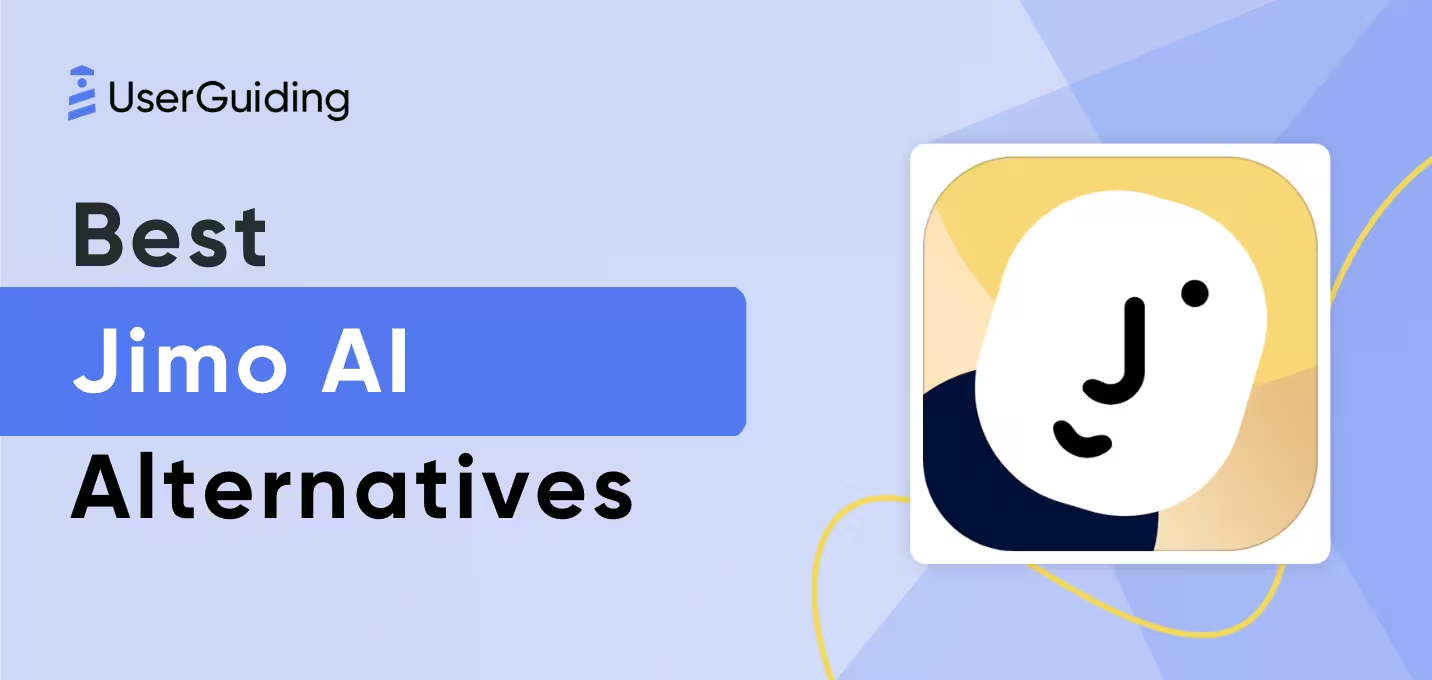

We’ve all been there—staring at a step-by-step guide that’s supposed to “simplify” things, but instead leaves you feeling lost and frustrated.
As someone who’s been on both sides of this experience—writing about guides and desperately Googling them—I know how important it is to get it right.
A good guide doesn’t just provide steps; it builds trust.
It makes people feel like they can handle even the most complex tasks with ease.
The challenge?
Balancing clarity and thoroughness without overwhelming the reader.
You might be creating instructions for tech pros or absolute beginners, in either case, a well-crafted guide can make all the difference.
In this article, we’ll explore what it takes to create instructions that are clear, effective, and engaging.
Because let’s face it, no one will be interested in reading your guide if it feels robotic or, worse, condescending.
TL;DR
- Step-by-step guides are sequential instructions designed to simplify complex tasks, empower users, and align with the growing trend of self-service solutions.
- Detailed guides reduce errors, enhance collaboration, and help you create consistent, repeatable success across your teams and customers.
- To create an effective guide, research your audience, break steps into clear sequences, and use simple, jargon-free language.
- Visual aids like screenshots, videos, and infographics improve understanding and engagement.
- Regularly test guides with users and update them based on feedback to ensure clarity and accuracy.
- Tools like UserGuiding, Whatfix, Scribe, SnagIt, Loom, and Zight simplify the creation process with features tailored for step-by-step guides.
What Is a Step-by-Step Guide?

A step-by-step guide is a structured sequence of instructions aimed at breaking down complex processes into manageable and actionable little chunks of steps.
🚀Its purpose is to simplify tasks and make the whole thing easier for users, which makes it a cornerstone of the self-service business approach.
Here’s why it is so critical:
🏆79% of customers expect organizations to offer self-service support tools, such as FAQs or knowledge bases, allowing users to find answers on their own.
🏆Additionally, 83% of customers would use an online community for self-service support.
🏆Self-service is not just convenient but also preferred; 65% of customers opt for self-service for simpler issues, demonstrating a shift in customer expectations towards quicker and more autonomous solutions.
Here’s what’s more to it.
Why Are Step-by-Step Guides Important?
Step-by-step guides are like having a helpful friend walk you through something new—they make everything less stressful and a lot more manageable.
Here’s why they’re such a game-changer.
First off, they’re amazing at making things clear for everyone.
Whether someone’s just starting or already knows the basics, these guides meet them at their level.
Imagine explaining how to set up a new app to a tech-savvy friend versus someone who isn’t sure what “settings” means. 🤔But hey, we listen and we don’t judge.
A good guide bridges those gaps, so no one feels left out or overwhelmed.
They’re also perfect for teams and companies of any size, because they double as go-to resources for training, onboarding, or even troubleshooting.
Think about the last time you joined a new team or tried out a product.
Having something to refer to—not just once but anytime you need—takes the pressure off, right? 🤩
And for companies, it saves a ton of time. Instead of answering the same question a hundred times, they can point people to a ready-made guide. Win-win.
And here’s a fun thought: interactive guides are stealing the spotlight right now.

Did you know that 81% of marketers say interactive content grabs more attention than plain old static stuff?
Similarly, 91% of B2B buyers state they prefer interactive and visual content to at all times.
So imagine a guide where you can click through steps, watch little videos, or even fill out forms right there.
It’s like the difference between reading about riding a bike and hopping on one for the first time. 🚴🏻♀️
This is why step-by-step guides aren’t just practical—they’re encouraging.
They help people feel capable, whether they’re learning something for the first time or just refreshing their memory.
The Importance of Detailed Instructions
1- Detailed Instructions Reduce Errors and Confusion
When instructions are clear and specific, users are less likely to feel lost or make mistakes. Imagine trying to assemble furniture with vague directions—frustrating, right?
Now apply that to anything from software setup to customer onboarding.
A lack of clarity can lead to serious problems, and the stats back this up: 55% of customers will stop using a product or service they don’t understand.
That’s more than half your audience walking away just because things weren’t clear.
2- They Improve Knowledge Sharing and Collaboration
Detailed instructions also act as a shared language within teams.
Think about a scenario where everyone knows the exact steps to follow—fewer misunderstandings and smoother collaboration all around.
In a workplace or customer-facing context, this can be the difference between seamless teamwork and repeated questions like, “Wait, how do I do this again?”
3- They Help Achieve Repeatable Success and Consistency
Consistency is key, whether it’s for users trying to learn a process or businesses aiming for reliability.
Detailed instructions make success replicable.
For you, this means better outcomes, fewer customer complaints, and stronger loyalty.
Did you know that customers are 50% more likely to stay loyal to a company with an effective onboarding process?
And 73% of users stick with a brand because of a good user experience. So, it’s no joke, friends.
When and Where to Use Step-by-Step Guides
Step-by-step guides aren't just about following a list of instructions—they’re about making tasks feel less daunting and more achievable. ✨
They give clarity, save time, and reduce frustration for anyone trying to accomplish something new or complex.
Let’s take a closer look at how these guides can be used in different scenarios, with examples and resources to help you make them work for you.
Employee Onboarding and Training
Make the first day less overwhelming by offering clear, actionable instructions. From setting up email accounts to understanding workflows, step-by-step guides reduce the learning curve.

I’ve been listening to The Modern Manager podcast by Mamie Kanfer Stewart lately, and it’s been such a great find, especially while working on this article.
One episode really stuck with me—it talked about how breaking things into clear, actionable steps can make onboarding and team workflows so much easier.
It reminded me of how step-by-step guides can take the overwhelm out of new tasks and help people feel confident faster.
If you’re someone who appreciates practical advice and loves exploring ways to make processes simpler, you should give this one a go.
Customer Onboarding and Support
You need to help customers fall in love with your product by offering tailored instructions.
This can be setting up a new app or troubleshooting a device, does not matter really, eaither way personalized guides can significantly enhance this user experience that you’re offering.
HubSpot’s YouTube channel has some inspiring videos on improving customer support with practical, actionable tips.
I absolutely love each and every one of them.
Standard Operating Procedures (SOPs)
Consistency is the backbone of any well-run process. It’s what keeps everyone aligned and avoids those frustrating “wait, what’s the next step?” moments.
Having clear SOPs means no guessing games—just straightforward, reliable instructions everyone can follow.
Pair them with tools like Trello or Notion, and you’ve got a system that’s not just efficient but also easy to manage. It’s like giving your team a shared playbook where everyone knows their role.

Here’s something else that ties in perfectly with SOPs: ‘’The Productivity Show’’.
One of their episodes talks about how breaking tasks into clear, actionable steps is essential for efficiency—something that’s at the heart of every great SOP.
This relates to how step-by-step guides are often critical in areas like onboarding, recurring workflows, or even managing complex projects.
Process Management for Complex Workflows
It’s easy to get lost in complex workflows, especially when multiple teams or tools are involved.
This is when step-by-step guides are like a friendly GPS for your projects, breaking everything down into smaller, doable actions.
If you’re a project manager, you’ve probably faced the challenge of keeping everyone on the same page.
A guide can make this so much easier.
Imagine you’re gearing up for a big product launch. Instead of asking your team to “prepare everything,” you create a guide outlining each phase: from setting up marketing emails to running quality tests and coordinating with designers.
With this level of detail, no one has to guess their next move, and your workflow runs smoothly without unnecessary hiccups.
If you want to take things up a notch, listen to The WorkLife Podcast with Adam Grant.

His insights on team efficiency and balancing creativity with structure are incredibly relatable.
One episode dives into how clear systems can spark innovation without stifling individuality—something every team can benefit from.
Knowledge Base and Troubleshooting Documentation
A well-crafted knowledge base is like having a friendly guide available anytime your users need help.
It’s where they go to solve problems, understand features, or find quick answers to those "How do I...?" questions.
By offering clear, step-by-step instructions, you’re making sure even the trickiest issues feel manageable—no tech support email required.🚀

Let’s say someone’s trying to reset a password or troubleshoot a device issue.
If they can open your guide, follow a few simple steps, and fix it themselves, you’ve just saved their day (and probably earned some loyalty points too).
It’s all about removing barriers and making life easier.
To take it a step further, consider how you structure your knowledge base.

Organizing it by topic, using easy-to-understand language, and adding visuals like screenshots or videos can make it even more user-friendly.
Google’s Webmasters Central Blog has some fantastic tutorials on how to organize content effectively—it’s worth a look if you’re building or revamping your knowledge base.
Tutorials for Software, Tools, and Devices
Helping users navigate software or devices often starts with a great tutorial, and that’s exactly where we come in.
With UserGuiding, we make it easy to create interactive, step-by-step guides that live right inside your platform.
Think of it as having a built-in guide who can walk users through everything from setting up their accounts to mastering advanced features—all without leaving your app.
What sets UserGuiding apart is how intuitive and adaptable it is.
You don’t need to be a developer to design sleek, interactive onboarding flows or tutorials.
For instance, if you’ve just launched a new feature, you can create a walkthrough that automatically pops up to introduce users to it.
Each step highlights exactly where to click or what to do, so there’s no room for confusion.
But why stop there? Pairing these in-app guides with other learning resources, like video tutorials or documentation, can create a ✨holistic✨ learning experience.
For some inspiration on visual storytelling, check out YouTube channels like Techquickie or Marques Brownlee.
They mainly talk about breaking down complex tech concepts into simple, digestible formats that resonate with viewers.
How to Create an Effective Step-by-Step Guide
Creating a great step-by-step guide starts with understanding who you’re creating it for and what they need to achieve. First things first.
If you’re looking for a detailed walkthrough, check out our YouTube video, where we explain how to create a guide using UserGuiding. It’s packed with insights and practical examples.🤌🏼
Step 1: Research and Preparation
Creating a step-by-step guide without preparation is like setting out on a road trip without a map. Or Google Maps for that matter, lol.
Taking time to understand your audience and plan your content not only makes the process smoother but also guarantees that your guide is ✨genuinely✨ useful.
Let’s break it down.
Know Your Audience
Start by asking, ‘’Who am I writing for?’’
- Are they tech-savvy or complete beginners?
Knowing their skill level helps you tailor your tone, language, and examples. For instance, 63% of customers feel frustrated when content doesn’t cater to their skill level, according to a study on customer expectations by Tidio.
- If you’re unsure about your audience, tools like Google Analytics or feedback forms can provide insights.
Set Clear Objectives
What’s the ultimate takeaway for your reader?
It might be setting up software, troubleshooting a device, or mastering a new tool, in each case, your guide needs a clear purpose.
Setting a clear objective not only directs the user toward an achievable outcome but also boosts their engagement within the entire journey.
🎯A clear objective acts as a promise to your readers—answering their "why" and making sure they feel the guide’s value instantly.
For example: “By the end of this guide, you’ll be able to set up your CRM system in 10 minutes.”
This specificity resonates with your users immediately and keeps them motivated to complete the steps.
Gather Your Resources
This step is all about preparation.
Collect everything you need before you start:
- Tools and Screenshots: A report by Venngage highlights that visual elements like infographics and charts can make information 3x more likely to be retained than text alone. Take screenshots or record walkthrough videos for key steps.
- Links and Examples: Want to highlight specific resources? Include links or real-world use cases.
- Feedback from Peers or Customers: Check if someone has already gone through the process. Their feedback can help refine your instructions.
While gathering resources, consider exploring platforms like Canva for creating visually engaging guides or UserGuiding for embedding step-by-step walkthroughs directly in your software.
Preparation isn’t just about being organized; it’s about setting up your audience (and yourself) for success.
You’re building something that will solve a problem, save time, and maybe even make someone’s day a little easier. Isn’t that the whole point? 🧡
Step 2: Structuring the Guide
Simplify Tasks with Bite-Sized Steps
Research shows that users are 60% more likely to complete tasks when they’re presented in smaller, actionable segments rather than as overwhelming chunks of information.
We get that now.
Steve Krug, author of Don’t Make Me Think, further emphasizes, “Clarity trumps everything else. If you can’t make something self-evident, make it self-explanatory.”
By breaking tasks into manageable steps, you not only guide your audience more effectively but also boost their confidence in facing challenges.
You make them believe they can actually cope with problems.
How amazing is that?
Organize in a Logical Flow
Humans naturally process information in sequences, which is why a logical flow is essential.
📈Studies show that 65% of learners perform better when information is presented in a structured format.
So, people process information best when it’s presented in a logical order.
What’s new?
Well, you need to start with the basics and gradually build up to more complex tasks in light of this.
Linear progression ensures clarity and minimizes confusion.
This approach is especially well-illustrated in apps like Duolingo, a platform we all know and love for its gamification, awards, and the fun it brings to the language-learning table.

With Duolingo, each lesson builds on previously mastered concepts, from learning basic vocabulary to constructing full sentences.
By rewarding users with progress streaks and levels, Duolingo always makes sure users remain engaged and confident as they keep going.
Incorporate Progress Markers
🚀Structuring your guide into manageable steps isn’t just about aesthetics—it’s about usability, too.
James Clear, the author of Atomic Habits, emphasizes that "small wins create a momentum of their own," a principle that we can apply to our guide creation.

As for as an example again, Duolingo uses checkpoints like little gates you pass through as you complete sections of your language course.

They’re designed to help you review what you’ve learned so far before unlocking new material.
📈Think of it as a “level up” moment—it’s satisfying and keeps you feeling accomplished.
Duolingo also uses streaks and badges to celebrate your wins, whether it’s finishing a lesson or practicing daily for a week.

Every streak you maintain or badge you earn feels like a small victory, encouraging you to keep going.
Step 3: Writing Clear Instructions
When it’s time to write, clarity is your best friend.
Start by using simple, jargon-free language.
The goal is to make your guide accessible to everyone, whether they’re a seasoned pro or just starting out.
Complex terms can confuse your audience, so keep things straightforward.
For example, instead of saying, “Initialize the configuration setup,” try “Start the setup process.”
Make sure each step begins with a clear, action-oriented verb.
Words like click, select, type, or download immediately tell users what they need to do.
Be specific, too.
Naturally, ambiguity can lead to frustration.
Instead of “Select the file,” say, “Select the green folder labeled ‘Projects.’” Little details can make a huge difference in helping users feel confident they’re on the right track.
Remember, the clearer and more actionable your instructions, the better experience you’re creating for your audience.
Step 4: Incorporating Visual Aids
Visuals are a game-changer when it comes to making your guides more engaging and easier to follow.
Screenshots, diagrams, infographics, or videos help clarify steps that might feel overwhelming when described in text alone.

For example, imagine trying to explain how to navigate a new app—it’s much simpler when you include labeled screenshots showing exactly what to click or where to look.
Annotations like arrows, highlights, or text boxes can make visuals even more effective.
These small touches direct the reader’s focus to the most important parts of the image, reducing the chances of them getting lost in the details.
But here’s the trick: make sure your visuals complement your text instead of duplicating it.
If the text already says “Click the red button at the top right,” a simple screenshot with an arrow pointing to the button is all you need.
No need to repeat the instructions in the image itself.
Data backs this up too. According to research, 97% of new customers prefer to be welcomed and educated through videos. They think videos can simplify complex ideas and create a more personal connection.
Step 5: Testing and Revising
Creating a guide doesn’t end once it’s written.
To truly be effective, it needs to be tested in the real world.
Start by sharing the guide with a representative audience—people who closely resemble your intended users.
Their feedback is gold!
Did they find the guide easy to follow? Were there any confusing steps? Listening to their input helps you pinpoint pain points or gaps that might not be obvious to you as the creator.
Once you’ve gathered this feedback, it’s time to revise and refine.
Check for accuracy (are all the details correct?), clarity (is the language easy to understand?), and consistency (does the tone and format match throughout?).
Best Practices for Step-by-Step Guides
1. Maintain Consistency In Tone and Style
Consistency is key to keeping your readers engaged.
Whether you're guiding them through a tutorial or sharing important tips, make sure your voice stays uniform.
Opt for a friendly, conversational tone—imagine you’re explaining things to your friend.
Use the same terms throughout the guide to avoid confusion, and keep your language simple and approachable.
A consistent tone will help readers feel like they’re on a journey with you, rather than reading a dry, technical manual.
Let’s look at Apple’s user manuals.

They have mastered a friendly yet professional tone.
Whether it’s setting up a new Apple Watch or troubleshooting an issue, the language is always warm, simple, and easy to follow.
2. Organize Content Into Logical Categories
Big, complex topics can overwhelm your readers.
That’s why organizing your guide into digestible chunks is crucial.
Start with an overview and break down the process into logical sections.
Each step should lead naturally to the next, and each section should be focused on a specific aspect of the guide.
This method gives readers a clear roadmap and ensures they never feel lost.
Take the Airbnb host guide.

They break everything down into stages: “Setting Up Your Profile,” “Creating a Listing,” “Managing Reservations,” and “Handling Guest Communication.”
Each section is focused on a specific aspect of the hosting process, making it easy to follow and reference as needed.
This is a great model for a complex guide that could otherwise overwhelm the reader.
3. Provide Easy Navigation
Let’s face it: navigating a lengthy guide can be a hassle without the right tools.
If your guide is on the longer side, include a clickable table of contents so readers can jump to the exact section they need.
You can also include links that let them skip back and forth between related sections.
Don’t forget to allow them the option to come back to the guide later if they get distracted! This makes the experience much smoother and more user-friendly.
HubSpot’s knowledge base is a perfect example of user-friendly navigation.

Each article has a clickable table of contents, links to related articles, and a "Back to Top" button.

This is especially helpful when a reader is searching for specific information without wanting to read the whole article.
The key is to make navigation effortless and intuitive at all times.✨
4. Include FAQs or Troubleshooting Tips
No guide is perfect, and problems can pop up at any time.
The best thing you can do is anticipate those challenges and offer helpful solutions upfront. This is where FAQs and troubleshooting tips come in handy.
By addressing potential hiccups or common mistakes, you make the guide more complete—and your readers will appreciate the extra help.
WordPress does an excellent job of including troubleshooting tips in their support documentation.
For instance, if you're having trouble with a plugin, their guide not only tells you how to install it, but also what to do if it doesn’t work as expected—such as deactivating other plugins or checking for compatibility issues.

By offering these solutions upfront, they make the process much smoother for the reader.
Advanced Tips for Exceptional Guides
Use Interactive Elements
Engagement skyrockets when your readers can actively participate.
Add interactive features like quizzes to test their understanding, clickable steps to make navigation a breeze, or embedded videos for visual learners.
Here’s a short story about interactivity in guide creation and what it can do for you.
Ajar, a property management platform, needed to enhance their onboarding experience.
They discovered a solution by incorporating an interactive guide feature into their process.
UserGuiding helped them with that.🤌🏼
This approach allowed them to streamline the user journey and provide step-by-step instructions, making sure new users could navigate the platform with ease and confidence.

By guiding users seamlessly with techniques like background dimming, strategic tooltip placement, and a checklist to track progress, Ajar demonstrates that effective interactivity doesn’t have to break the bank.
Their thoughtful approach to onboarding highlights how simplicity and precision can elevate the user experience.
And yes, there’s even more to their success story if you’re curious. 🚀
Another example is Vieworks.
Vieworks faced a significant challenge in onboarding and customer support, with users frequently getting lost in the process.

To address this, they turned to UserGuiding to weave interactivity into their onboarding flow—and it seems the results didn’t disappoint.
So, key takeaways?
Ajar kept things simple but powerful, using dimmed backgrounds, perfectly placed tooltips, and a handy checklist to lead users exactly where they needed to go.
The result?
A polished onboarding process that didn’t cost a fortune but felt premium.
Vieworks took a similar path, but their focus was solving a major issue: users just weren’t finding their way.
What’s cool here is that these small tweaks—interactive guidance, a touch of personalization—completely changed the game for their users.
The real magic?
These examples show us that interactivity isn’t just a flashy add-on; it’s how you turn “meh” guides into “wow” experiences.
It’s about meeting users where they are, helping them feel confident, and, most importantly, making the process fun and frustration-free.
Apply Storytelling Techniques
Everyone loves a good story, so why not weave relatable scenarios into your guide?
Framing steps within real-world contexts makes them more memorable and approachable.
Instead of just listing instructions, show how the guide solves a problem or improves the reader’s situation.
Although not a typical ‘’guide creation’’ process, Airbnb’s storytelling is worth mentioning here.
Their website is a prime example of storytelling done right.

It really puts the user at the center, whether they’re a traveler on the hunt for their next adventure or a host sharing their space with others.
The "conflict" they tackle?
Helping travelers find the perfect place to stay.
And they do it all while wrapping it in a cozy, inviting vibe that feels totally on-brand.
I know it's not exactly a guide, but the way Airbnb creates an engaging experience is a nice reminder of how powerful storytelling can be when it comes to keeping people engaged.
Offer Downloadable PDFs
Sometimes we just need to save something for later or keep it handy when we’re offline. I know I do it. Don’t say you don’t.🫣
Offering guides in downloadable PDF format is a great way to give your users that flexibility.
Whether they’re traveling, commuting, or in a place with spotty Wi-Fi, PDFs ensure they can always access your content.
This is exactly what Canva does: their easy-to-navigate tutorials can be downloaded and referenced later, making it super convenient for users who might want to revisit a specific design or feature without relying on an internet connection.

If we think about it, this is especially relevant in today’s world, where mobile data isn’t always unlimited or reliable. 😔
Offering offline access not only makes your guides more accessible but also shows you understand the variety of ways people consume content.
Plus, many people just prefer reading a physical copy!
Add a "Need Help?" Section
Sometimes, even the best guides don’t answer every question, which is where a "Need Help?" Section becomes invaluable.
By offering easy access to customer support—whether through live chat, email, or phone assistance—you show users that help is just a click or call away.
Zappos, for instance, has built a reputation for excellent customer service, with live chat being an immediate, efficient way for users to get answers.

👉🏼According to Zendesk, 79% of consumers prefer live chat because it’s fast and convenient.
So, that’s something to chew on before you go.😉
Avoiding Common Pitfalls
Like with everything else, it’s easy to slip into a few common traps here. But I’ve got you covered.
Overloading Information
We all want to make sure users have everything they need, but too much info at once can overwhelm people.
Keep each step focused on one key point.
Think of it like explaining something to a friend: if you dump all the details on them at once, they’ll likely zone out.
Instead, break it down into smaller, more manageable pieces.
Inconsistent Formatting
It’s tempting to get creative with different fonts and styles, but consistency is key.
Imagine trying to read a guide where the headings are all over the place, and the font changes every few lines—it would make anyone dizzy.
Make sure everything from your headings to the images follows the same style so it feels polished and easy to follow.
Neglecting Visuals
A wall of text? No thanks.
People absorb information differently, so balancing text with visuals—like screenshots, icons, or diagrams—helps a ton.
Look at how platforms like Trello use visuals in their onboarding guides to make the process smoother and more engaging.

A picture really can be worth a thousand words.
Skipping User Testing
Finally, never underestimate the value of user feedback.
We often think we’ve nailed it, but real users will give you a fresh perspective.
Whether it’s pointing out confusing steps or suggesting improvements, testing with actual people always makes sure your guide is as clear and helpful as possible.
Publishing and Distributing Step-by-Step Guides
There are a few things to consider here that can make your guides, or 💔break💔 your guides. Let’s take a look.
Choose the Right Platform
The platform you choose to use to share your guides should always, and I mean always, align with your audience and their needs.
For internal teams, knowledge bases or a company intranet are great options.
For public-facing guides, you can host them on your website or on dedicated support pages.
UserGuiding is an excellent tool for distributing guides to users directly within your product.
With our interactive guide features, you can create walkthroughs that are embedded within your app, helping your users follow along with ease without having to leave the platform.
It integrates seamlessly with web apps, which makes your guides accessible right where the user needs them. Genius.
Optimize Guides for Both Web and Mobile Access
With users accessing content across various devices, it's important to make sure your guides are mobile-friendly.
This means your guide’s layout, images, and videos should adapt to smaller screens without losing clarity.
A mobile-friendly guide makes sure that users can follow along no matter where they are, whether on a desktop or smartphone.
Plus, if you think about mobile internet usage and how far it’s surpassing desktop usage, optimizing for mobile isn't just a nice-to-have—it's essential for user engagement these days.
Share Guides Through Relevant Channels
Once your guide is created, think about how best to get it into the hands of users.
🚀Let’s start with email—good old email.
It might seem simple, but it’s such a reliable way to connect.
Picture this: a new user signs up for your product, and the next day, they get a friendly email that says, “Hey, welcome! Here’s a quick guide to get you started.” That little nudge not only makes life easier for them but also shows that you care about their experience.

Companies like HubSpot do this so well—it’s like they’ve anticipated every question you might have and are ready with a helpful step-by-step guide.

🚀Now, in-app messages? They’re the superheroes of real-time help.
Tools like UserGuiding helps you meet your users exactly where they’re working.
For instance, imagine opening an app and being greeted with, “Stuck? Let’s walk through this together!”
It’s like having a friendly assistant pop up just when you’re about to get frustrated.
It’s personal, and incredibly effective at making sure users don’t just use your product—they enjoy it.
🚀Then there’s the long game—embedding your guides into training materials or help centers.
Platforms like Notion make this feel super seamless.

Their guides aren’t just thrown together; they’re thoughtfully integrated into their knowledge base so that you always know where to look.
Measuring the Effectiveness of Your Guides
Figuring out whether your guides are ✨actually✨ helping can feel like a bit of a guessing game, but it doesn’t have to be.
Think of it as having a conversation with your users—getting their thoughts, seeing how they interact, and making improvements together.
🚀One of the simplest ways to start is by asking for feedback.
A quick survey at the end of your guide or a "How did we do?" rating system can work wonders.
Keep it simple: "Was this guide helpful?" or "What could we improve?"
These little nudges make users feel heard and give you real, actionable insights.
🚀Then there’s analytics, which can tell you the story your users might not say out loud.
Tools like Google Analytics or Hotjar can show you exactly where people spend the most time, where they drop off, or even where they keep revisiting—maybe something isn’t clicking there.
It’s like being able to peek over their shoulder (in a non-creepy way, of course).😂
You’ll also want to keep an eye on completion rates. If people are stopping halfway through your guide, it might mean it’s too long, too confusing, or just not relevant enough.
🚀Lastly, don’t forget: guides aren’t meant to sit on a shelf collecting dust. They need attention to stay relevant.
Tools for Creating Step-by-Step Guides
There are so many great tools out there for creating step-by-step guides, and after some research (and dabbling with a few), I can confidently say each one brings something unique to the table.
Let’s dive in, shall we?
UserGuiding

If you’re looking for an all-in-one solution that makes creating interactive guides a breeze, UserGuiding is a solid choice.
Our tool lets you add tooltips, walkthroughs, and checklists directly into your platform without needing a developer. Check them out:
What is so great about UserGuiding is how it prioritizes the user experience.
You can guide people through processes step by step in a way that feels intuitive and seamless.
It’s especially great for SaaS companies or internal employee training.
You can easily become one of these successful SaaS companies with UserGuiding!
Whatfix

Whatfix takes interactivity to the next level.
This tool creates in-app guidance, helping users complete tasks without leaving the interface.

It’s ideal for training employees or onboarding customers because it gives them help right where they need it.
One standout feature is its ability to adapt to user behavior—so if someone struggles, Whatfix can adjust and offer extra support.
It’s like having a personal guide living inside the platform.
Scribe

Scribe feels like magic when you’re documenting workflows.
You just perform the task, and it automatically generates a step-by-step guide, complete with screenshots and annotations.
This is a lifesaver if you’re short on time but need clear, polished instructions.

I’ve personally seen Scribe work wonders for creating internal guides, like showing a team how to use a new software tool.
It’s straightforward and saves hours of manual documentation.
SnagIt

SnagIt is a classic tool that’s been around for ages, and for good reason.
It’s perfect for grabbing screenshots and annotating them, which is ideal for guides that need visual aids.
What’s awesome is its simplicity—it doesn’t take long to figure out, and you can get as creative as you want with arrows, text, and highlights.
If your guide is more visual-heavy, SnagIt is a must-have.
Loom

Sometimes, words just don’t cut it, and that’s where Loom comes in.
It’s a video-based tool that lets you record your screen while talking through the steps.
I’ve personally used Loom when explaining something complicated to my boss—it’s faster and more personal than typing out instructions.
Here’s how it looks. I still use it today to explain anyone anything, really. 😂

Plus, you can add little touches like your webcam bubble, making it feel like you’re walking them through it in real-time.
Zight

Zight is another multitasking powerhouse.
It combines the best of visual guides and text, letting you create and share annotated screenshots, GIFs, and videos.
It’s particularly handy for quick explainer guides or support responses.
I like how polished and easy-to-share the content looks—it’s professional without being overwhelming.
Conclusion
Creating step-by-step guides is like having a friendly conversation with someone who needs a bit of help.
You’re not just writing instructions—you’re making things easier, showing you care, and building trust.
Whether it’s onboarding a new customer, helping a teammate tackle a tricky task, or just explaining how to use a tool, a good guide feels like having someone right there beside you, cheering you on.
Tools like UserGuiding make this even simpler, turning something that might feel overwhelming into a straightforward process.
Honestly, once you start using tools like this, it’s hard to go back—we make creating guides feel so smooth and professional.
And the best part? When people tell you, “Wow, that was easy!”—it’s such a win.
In the end, step-by-step guides aren’t just helpful—they’re little acts of kindness that make things better for everyone.
Keep it clear, keep it fun, and don’t forget to throw in a little personality. Your users (or team) will thank you for it!
Frequently Asked Questions
How do I make a quick guide?
First, you need to identify your audience and the critical information they need in order to complete a certain task. Then, you should logically organize your content and create a list of steps. You must make sure that the steps are clear and easy to follow. Finally, you should add visuals, graphs, screenshots, or illustrations to enhance understanding.
How do you make a step-by-step video?
The easiest and fastest way to make a step-by-step video is to use screen recording software or a video editing tool. First, make an outline for yourself that contains the steps you want to demonstrate in the guide and, optionally, a speech script that consists of the tips/warnings you want to share. Afterwards, record your screen as you go through each step. You can later make some edits to the video footage, such as adding titles and captions.
Is there a way to create interactive content, without coding?
YES! No-code tools, such as UserGuiding, Stonly, and Pendo, enable users to create interactive guides, product walkthroughs, tooltips, onboarding checklists, etc. These platforms offer a range of templates and customization options to create engaging and interactive guides and product tours.

















.svg)
.svg)
.svg)
.svg)
.svg)

.svg)
.svg)












.svg)
.svg)




.png)
















